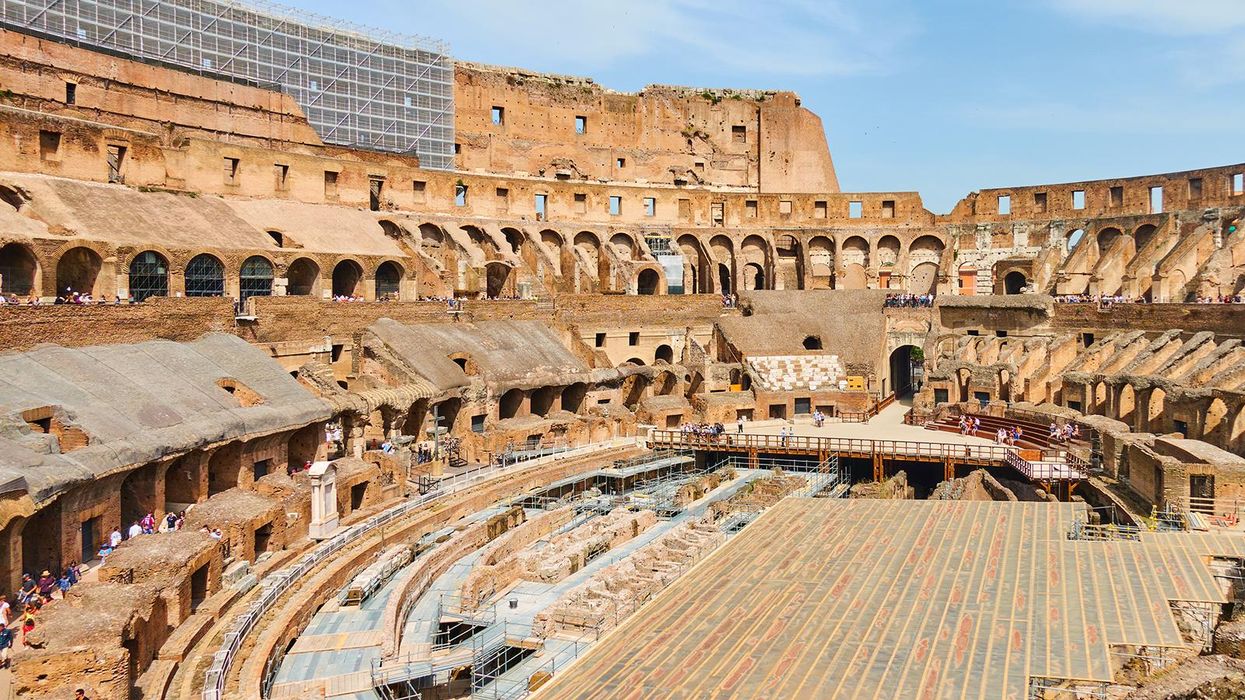(CNN) — The majestic structures of ancient Rome have survived for millennia — a testament to the ingenuity of Roman engineers, who perfected the use of concrete.
But how did their construction materials help keep colossal buildings like the Pantheon (which has the world's largest unreinforced dome) and the Colosseum standing for more than 2,000 years?
Roman concrete, in many cases, has proven to be longer-lasting than its modern equivalent, which can deteriorate within decades. Now, scientists behind a new study say they have uncovered the mystery ingredient that allowed the Romans to make their construction material so durable and build elaborate structures in challenging places such as docks, sewers, and earthquake zones.
The study team, including researchers from the United States, Italy, and Switzerland, analyzed 2,000-year-old concrete samples that were taken from a city wall at the archaeological site of Privernum, in central Italy, and are similar in composition to other concrete found throughout the Roman Empire.
They found that white chunks in the concrete, referred to as lime clasts, gave the concrete the ability to heal cracks that formed over time. The white chunks previously had been overlooked as evidence of sloppy mixing or poor-quality raw material.
"For me, it was really difficult to believe that ancient Roman [engineers] would not do a good job because they really made careful effort when choosing and processing materials," said study author Admir Masic, an associate professor of civil and environmental engineering at the Massachusetts Institute of Technology.
"Scholars wrote down precise recipes and imposed them on construction sites [across the Roman Empire]," Masic added.
The new finding could help make manufacturing today's concrete more sustainable, potentially shaking up society as the Romans once did.
"Concrete allowed the Romans to have an architectural revolution," Masic said. "Romans were able to create and turn the cities into something that is extraordinary and beautiful to live in. And that revolution basically changed completely the way humans live."
Lime clasts and concrete's durability
Concrete is essentially artificial stone or rock, formed by mixing cement, a binding agent typically made from limestone, water, fine aggregate (sand or finely crushed rock), and coarse aggregate (gravel or crushed rock).
Roman texts had suggested the use of slaked lime (when lime is first combined with water before being mixed) in the binding agent, and that's why scholars had assumed that this was how Roman concrete was made, Masic said.
With further study, the researchers concluded that lime clasts arose because of the use of quicklime (calcium oxide) — the most reactive, and dangerous, dry form of limestone — when mixing the concrete, rather than or in addition to slaked lime.
Additional analysis of the concrete showed that the lime clasts formed at extreme temperatures expected from the use of quicklime, and "hot mixing" was key to the concrete's durable nature.
"The benefits of hot mixing are twofold," Masic said in a news release. "First, when the overall concrete is heated to high temperatures, it allows chemistries that are not possible if you only used slaked lime, producing high-temperature-associated compounds that would not otherwise form. Second, this increased temperature significantly reduces curing and setting times since all the reactions are accelerated, allowing for much faster construction."
To investigate whether the lime clasts were responsible for Roman concrete's apparent ability to repair itself, the team conducted an experiment.
They made two samples of concrete, one following Roman formulations and the other made to modern standards, and deliberately cracked them. After two weeks, water could not flow through the concrete made with a Roman recipe, whereas it passed right through the chunk of concrete made without quicklime.
Their findings suggest that the lime clasts can dissolve into cracks and recrystallize after exposure to water, healing cracks created by weathering before they spread. The researchers said this self-healing potential could pave the way to producing more long-lasting, and thus more sustainable, modern concrete. Such a move would reduce concrete's carbon footprint, which accounts for up to 8 percent of global greenhouse gas emissions, according to the study.
For many years, researchers had thought that volcanic ash from the area of Pozzuoli, on the Bay of Naples, was what made Roman concrete so strong. This kind of ash was transported across the vast Roman empire to be used in construction, and was described as a key ingredient for concrete in accounts by architects and historians at the time.
Masic said that both components are important, but lime was overlooked in the past.
The research was published in the journal Science Advances.
The-CNN-Wire
™ & © 2023 Cable News Network, Inc., a Warner Bros. Discovery Company. All rights reserved.

















































